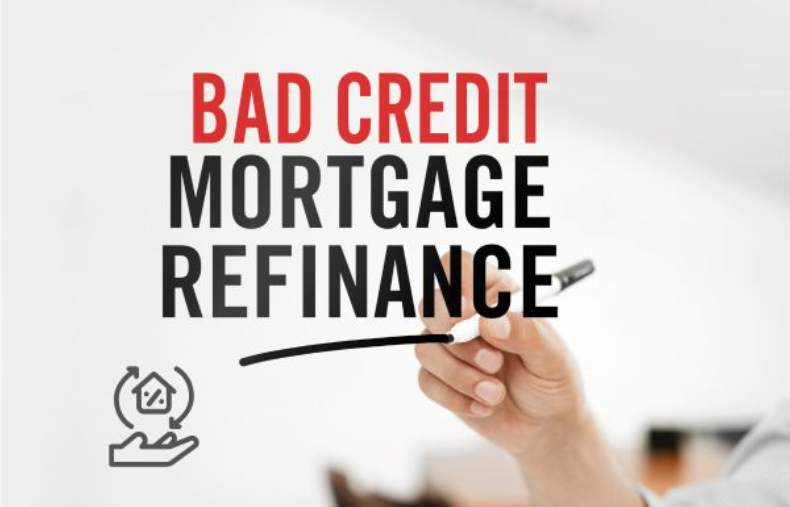How to Refinance with Bad Credit
Refinancing your mortgage can help you secure a lower interest rate, reduce your monthly payments, or tap into your home’s equity. But what if your credit score isn’t where you want it to be?
The truth is, refinancing with bad credit is challenging but not impossible. Lenders typically prefer borrowers with higher credit scores, but there are still paths you can take if you’re determined and informed.
In this post, we’ll explore how to refinance your mortgage with bad credit, the options available, and smart strategies to increase your chances of approval.
What Is Considered “Bad Credit”?
Credit scores range from 300 to 850. Here’s a basic breakdown:
-
Excellent: 740–850
-
Good: 670–739
-
Fair: 580–669
-
Poor: Below 580
If your score is under 620, most conventional lenders will consider you a high-risk borrower—but don’t give up just yet.
💡 Can You Refinance with Bad Credit?
Yes, but it’s harder. Lenders look at several factors beyond credit score:
-
Home equity
-
Debt-to-income (DTI) ratio
-
Employment and income stability
-
Current mortgage payment history
Having strengths in these areas can sometimes offset a lower credit score.
🔍 6 Refinancing Options for Bad Credit Borrowers
1. FHA Streamline Refinance
If you already have an FHA loan, this is one of the easiest ways to refinance.
-
No credit check or appraisal required
-
Must be current on your mortgage payments
-
Only for FHA-to-FHA refinances
✅ Best for: Homeowners with FHA loans and solid payment history.
2. VA Interest Rate Reduction Refinance Loan (IRRRL)
For veterans with VA loans, the IRRRL can help you refinance with minimal paperwork and no credit score requirement.
-
No appraisal or income verification needed
-
Must be a VA-to-VA refinance
✅ Best for: Veterans with bad credit and an existing VA mortgage.
3. Cash-Out Refinance (With Caution)
Some lenders allow cash-out refinancing with scores as low as 580—but you’ll need strong equity (usually at least 20%).
⚠️ Warning: This option can be risky. Higher rates and fees may apply, and you’re borrowing against your home.
✅ Best for: Homeowners with substantial equity who need to consolidate debt or cover major expenses.
4. Refinance with a Non-Traditional Lender
Online lenders and credit unions may be more flexible with credit score requirements compared to big banks.
-
May offer manual underwriting
-
Look for lenders who specialize in bad credit refinancing
✅ Best for: Borrowers shut out by traditional banks.
5. Use a Co-Signer
A trusted family member or friend with good credit may be able to co-sign the refinance application. This improves your risk profile in the eyes of lenders.
⚠️ The co-signer is equally responsible for the loan—so make sure they understand the risks.
6. Improve Your Credit Before Applying
If you’re not in a hurry, take a few months to raise your score. Even a small improvement can make a big difference in the interest rate you’re offered.
📈 7 Tips to Boost Approval Odds
Even with bad credit, you can strengthen your refinancing application by doing the following:
✅ 1. Build Home Equity
Lenders prefer borrowers with at least 20% equity in their homes. A higher equity stake = less risk for the lender.
✅ 2. Pay Down Debt
Lower your debt-to-income (DTI) ratio by paying off credit cards and other loans.
✅ 3. Fix Errors on Your Credit Report
Review your credit reports for inaccuracies. Disputing and correcting errors can give your score a quick boost.
✅ 4. Make On-Time Mortgage Payments
Lenders look closely at your payment history. Stay current for at least 12 months before applying.
✅ 5. Shop Around
Compare offers from multiple lenders—some may be more flexible than others. Use prequalification tools that don’t affect your credit.
✅ 6. Consider a Shorter Loan Term
If you can afford higher monthly payments, a shorter-term loan may come with better rates—even for bad credit.
✅ 7. Write a Letter of Explanation
If your bad credit is due to a one-time event (medical emergency, job loss, etc.), explain it in a formal letter. Some lenders will take this into account.
🛑 Watch Out for Predatory Lenders
Bad credit borrowers are often targets for scams or predatory lending. Be cautious of:
-
Extremely high fees or rates
-
Pressure to sign without reading the terms
-
Promises that seem too good to be true
Always read the fine print and check lender reviews or Better Business Bureau (BBB) ratings before moving forward.
✅ Final Thoughts
Refinancing with bad credit isn’t easy, but it’s far from impossible. With the right loan program, lender, and preparation, you may still be able to secure a better deal—or at least set yourself up for future financial success.
Take time to compare your options, seek professional guidance if needed, and don’t hesitate to ask questions along the way.


